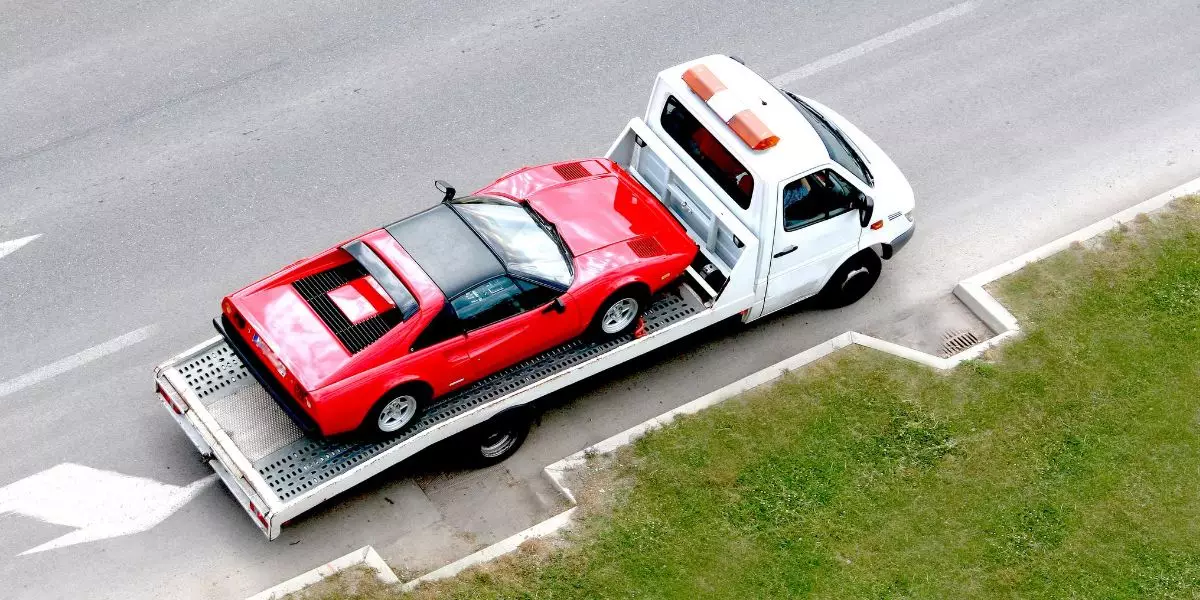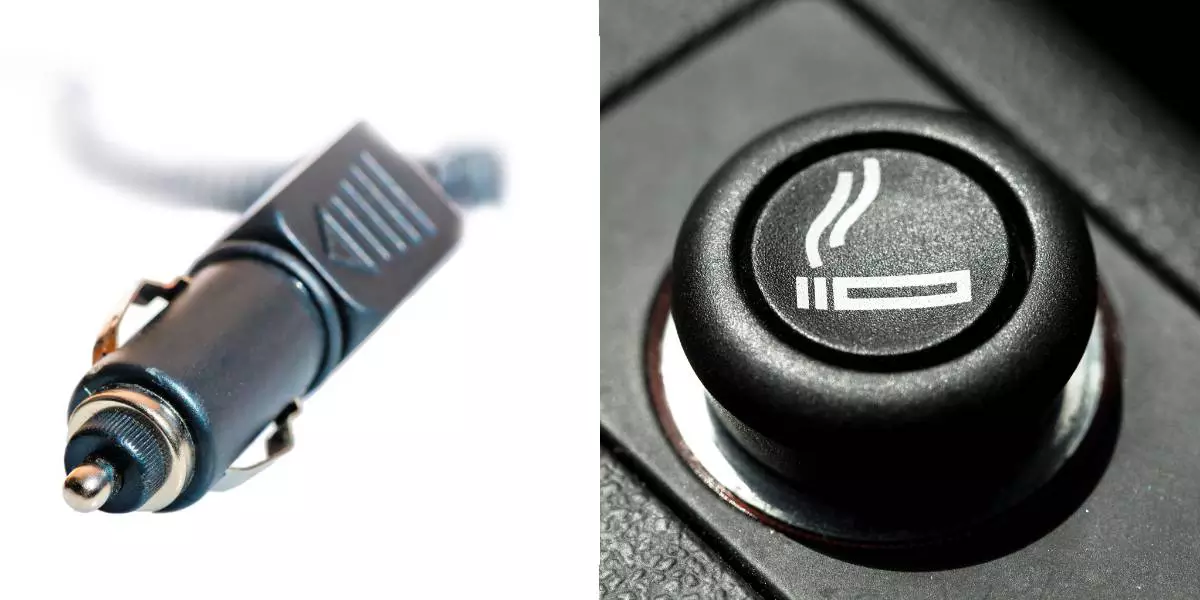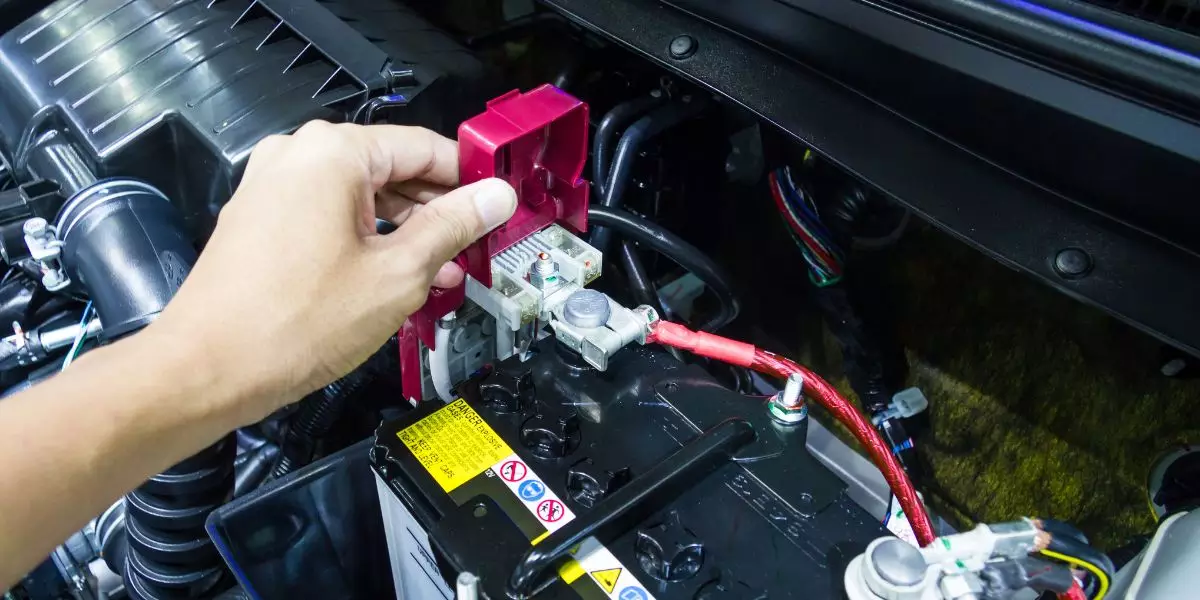Have you ever wondered if your car battery can die while you’re driving? It’s a common question that many drivers have, and in this article, we will explore the possibility of your car battery dying while in motion. From the potential causes to the signs to look out for, we’ll provide you with all the information you need to stay prepared on the road. So, fasten your seatbelt and let’s get started!
Can a car battery die while the engine is running?
Yes, a car battery can die while the engine is running. This can happen due to various reasons, such as a faulty alternator, electrical system failure, or excessive power demand. It’s important to address any underlying issues promptly to prevent a complete failure while driving.
Reasons why a car battery can die while driving
Electrical system failure
One possible reason for a car battery dying while driving is an electrical system failure. This could be due to a malfunctioning component or a wiring issue that causes an excessive drain on the battery. When the electrical system fails, it can put a strain on the battery, causing it to die unexpectedly.
Faulty alternator
The alternator plays a crucial role in keeping the battery charged while the car is running. If the alternator is faulty or not functioning properly, it may fail to provide the necessary charge to the battery. This can lead to the battery gradually losing its charge and eventually dying while driving.
Short circuits
Short circuits occur when there is an unintended connection between two points in an electrical circuit. These can occur due to damaged wiring or faulty electrical components. When a short circuit happens, it can create an excessive current flow, draining the battery and potentially causing it to die while driving.
Corroded battery terminals
Corrosion on the battery terminals can interfere with the battery’s ability to charge and discharge properly. When the terminals are corroded, it creates resistance in the electrical connection, which can lead to the battery dying while driving. Regular maintenance and cleaning of the battery terminals can help prevent this issue.
Parasitic drain
Parasitic drains occur when there is an electrical component in the car that continues to draw power even when the vehicle is turned off. This constant drain on the battery can eventually lead to it dying while driving. Common culprits of parasitic drains include interior lights, alarms, and faulty wiring.
Extreme weather conditions
Extreme weather conditions, such as extreme heat or cold, can take a toll on a car battery. In extreme heat, the battery can overheat and lose its ability to hold a charge. In extreme cold, the battery’s chemical reactions slow down, reducing its ability to provide power. These weather conditions can contribute to a battery dying while driving.
Overcharging
Overcharging occurs when the charging system provides too much voltage to the battery. This can result in excessive heat buildup and damage to the battery, ultimately causing it to die while driving. Faulty voltage regulators or charging system malfunctions can lead to overcharging.
Excessive use of electronics
Using multiple electronic devices and accessories in the car, such as headlights, air conditioning, or sound systems, can put a strain on the battery. If these electronics are used extensively without proper recharging, it can drain the battery and potentially cause it to die while driving.
Old or weak battery
Car batteries have a limited lifespan, usually ranging from three to five years. As the battery ages, its ability to hold a charge diminishes. An old or weak battery may not be able to sustain the power demands of the vehicle, leading to a sudden death while driving.
Defective voltage regulator
The voltage regulator is responsible for regulating the charging system’s output voltage and preventing overcharging. If the voltage regulator malfunctions, it can lead to erratic charging or overcharging, which in turn can cause the battery to die while driving.
Symptoms of a dying car battery while driving
Dim headlights and interior lights
One of the most noticeable symptoms of a dying car battery while driving is dim headlights and interior lights. When the battery is running low on charge, it may not be able to provide enough power to maintain the brightness of the lights, resulting in a dim or flickering illumination.
Malfunctioning electrical components
A dying car battery can cause various electrical components to malfunction. This could include issues with power windows, door locks, or even the infotainment system. These malfunctions may occur intermittently or persistently, indicating a battery in need of replacement.
Difficulty starting the car
If you experience difficulty starting your car, it could be a sign of a dying battery. As the battery loses its charge, it may not be able to provide enough power to turn the engine over. This can result in slow cranking or the engine not starting at all.
Flickering dashboard lights
Flickering dashboard lights can be a sign of an electrical problem, including a dying car battery. When the battery is unable to provide a consistent power supply, the dashboard lights may flicker or dim. This is an indicator that the battery is struggling and may die while driving.
Weakening power steering and brakes
A dying car battery can affect the power steering and braking systems. As these systems rely on electrical power, a weak or dying battery may not provide enough power to operate them effectively. This can result in decreased responsiveness or a heavy feeling when steering or braking.
Engine misfires or stalling
If your engine misfires or stalls while driving, it could be a symptom of a dying car battery. The battery provides power to the ignition system, and a weak battery may result in inadequate spark to ignite the fuel-air mixture in the engine. This can lead to engine misfires or even complete stalling.
Loss of radio or infotainment system
When a car battery is on the verge of dying, it may struggle to provide power to the radio or infotainment system. This can cause the system to intermittently cut out or completely shut off. If you notice a loss of audio or the screen going blank while driving, it could indicate a dying battery.
Effects of a car battery dying while driving
Loss of power steering
A dying car battery can lead to a loss of power steering assistance, making it difficult to maneuver the vehicle. Without the power steering system functioning properly, turning the steering wheel can become strenuous, especially at low speeds or when making tight turns.
Loss of power brakes
Power brakes rely on the vehicle’s electrical system to operate. When the battery dies while driving, it can result in a loss of power brake assistance. This means that pressing the brake pedal will require significantly more force to slow down or stop the vehicle, potentially compromising safety.
Compromised safety systems
Modern vehicles often have various safety systems that rely on the car battery, such as airbags, anti-lock braking systems (ABS), and traction control. If the battery dies while driving, these safety systems may become compromised, reducing their effectiveness in an emergency situation.
Inability to start the vehicle
If the car battery dies while driving, it may be impossible to restart the vehicle once it comes to a stop. This can leave you stranded in an inconvenient or potentially unsafe location, requiring assistance or towing to get the vehicle back on the road.
Inconvenience and potential breakdown
A car battery dying while driving can cause significant inconvenience and potentially lead to a breakdown. Whether it’s being unable to reach your destination or needing to wait for roadside assistance, a dead battery can disrupt your plans and leave you stranded until the issue is resolved.
Preventive measures
Regular battery maintenance
Regular battery maintenance is essential to ensure its longevity and prevent unexpected failures. This includes cleaning the battery terminals, checking the electrolyte levels (if applicable), and inspecting the battery for signs of damage or aging. Following the manufacturer’s recommended maintenance schedule can help identify potential issues before they cause a complete failure while driving.
Checking battery connections
Corroded or loose battery connections can interfere with the battery’s performance and contribute to a premature death while driving. Regularly checking and cleaning the battery terminals and cable connections can eliminate any potential resistance and ensure a strong electrical connection.
Avoiding excessive use of electronics
Minimizing the use of electronics in your vehicle can help preserve the battery’s charge and prevent it from dying while driving. Use features such as air conditioning, heated seats, and sound systems conservatively to avoid placing excessive demands on the battery.
Testing the alternator
The alternator is responsible for charging the battery while the car is running. Regularly testing the alternator’s output voltage can help identify any issues that may cause the battery to die while driving. A professional mechanic can perform this test and recommend any necessary repairs or replacements.
Keeping the battery clean
Regularly cleaning the battery and removing any corrosion or dirt buildup can help maintain its performance and prevent premature failure. Use a mixture of baking soda and water to clean the battery terminals and cables, ensuring a clean and strong electrical connection.
Avoiding short trips
Frequent short trips can prevent the battery from fully recharging, leading to a gradual loss of its capacity. Whenever possible, try to combine shorter trips or alternate between driving and using a battery maintainer to keep the battery charged.
Replacing an old battery
If your car battery is old or exhibiting signs of weakness, such as slow cranking or dimming lights, it’s advisable to replace it before it dies while driving. Regularly monitoring the battery’s performance and lifespan can help you plan for a replacement and prevent unexpected failures.
Addressing electrical issues promptly
If you notice any electrical issues with your vehicle, such as flickering lights or malfunctioning components, it’s important to address them promptly. Ignoring these issues can put additional strain on the battery and potentially lead to its failure while driving.
Using a battery maintainer
If you anticipate longer periods of inactivity for your vehicle, such as during extended vacations or storage, using a battery maintainer can help keep the battery charged and prevent it from dying. A battery maintainer will provide a slow and consistent charge, keeping the battery in optimal condition during periods of inactivity.
What to do if your car battery dies while driving
Stay calm and stay safe
It’s important to stay calm and focus on safely maneuvering the vehicle to a safe location. Avoid panicking or making sudden movements that could lead to accidents or collisions.
Move to a safe location
If it is safe to do so, try to move your vehicle to the side of the road or a nearby parking lot. This will minimize the risk of being in the flow of traffic and allow you to assess the situation more effectively.
Turn off unnecessary electrical components
To preserve any remaining power in the battery, turn off all unnecessary electrical components, such as lights, air conditioning, and audio systems. This will help reduce the load on the battery and potentially extend its remaining charge.
Try jump-starting the vehicle
If you have access to jumper cables and another vehicle, you can try jump-starting your car to get it running again. Follow the appropriate safety procedures and instructions for jump-starting a car. Once the car is running, it’s important to keep the engine running for a while to allow the alternator to recharge the battery.
If unsuccessful, call for roadside assistance
If jump-starting the vehicle doesn’t work or you don’t have access to another vehicle, it’s advisable to call for roadside assistance. They will have the necessary equipment and expertise to safely jump-start the vehicle or tow it to a nearby service center.
Consider carrying a portable jump starter or battery charger
To be prepared for unexpected battery failures, consider carrying a portable jump starter or battery charger in your vehicle. These devices can provide a quick and convenient solution for jump-starting a dead battery without the need for another vehicle.
Get the battery and alternator checked by a professional
After experiencing a battery failure while driving, it’s important to have the battery and alternator checked by a professional. They will be able to diagnose any underlying issues, such as a faulty alternator, and recommend any necessary repairs or replacements.
The role of the alternator in maintaining a healthy car battery
Charging the battery while driving
The alternator plays a crucial role in keeping the car battery charged while the engine is running. It generates electricity that the car’s electrical system needs and also replenishes the charge in the battery.
Powering the electrical components
In addition to charging the battery, the alternator also powers the various electrical components in the vehicle while it is running. This includes the lights, air conditioning, infotainment system, and other accessories. Without a properly functioning alternator, these components may not receive sufficient power, leading to dimming or malfunctioning.
Preventing overcharging
The alternator is equipped with a voltage regulator that controls the amount of voltage supplied to the battery. This prevents overcharging, which can damage the battery. The voltage regulator ensures a consistent and appropriate charge to the battery while preventing excessive voltage.
Supplying power when demand exceeds battery capacity
When there is a high demand for power, such as when starting the engine or using multiple electrical components simultaneously, the alternator supplies additional power to meet the demand. This prevents the battery from being drained quickly and helps maintain a stable power supply.
Diagnosing alternator problems
If the alternator is not functioning properly, it can lead to battery issues and a potential failure while driving. Common signs of alternator problems include dimming lights, a dead battery despite recent charging, or unusual noises coming from the alternator. A professional mechanic can diagnose and repair any alternator issues to keep the battery functioning optimally.
Understanding the importance of battery voltage and health
Battery voltage and its relationship with electrical systems
Battery voltage is a measure of the electrical potential difference between the positive and negative terminals of the battery. It is essential for the proper functioning of the various electrical systems in the vehicle. The voltage needs to be within a specific range to ensure optimal performance of these systems.
Testing and measuring battery voltage
Battery voltage can be tested and measured using a multimeter or a dedicated battery tester. This allows you to assess the battery’s health and determine if it is providing sufficient power. A healthy battery should have a voltage within the manufacturer’s specified range.
Recognizing warning signs of a weak battery
Knowing the warning signs of a weak battery can help you address any issues before they lead to a complete failure while driving. These signs may include slow cranking, dimming lights, clicking sounds when starting the engine, or a battery warning light on the dashboard. If you notice any of these signs, it’s advisable to have the battery checked by a professional.
What causes a car battery to die suddenly
Sudden internal cell failure
Sudden internal cell failure can occur in a car battery, even without any prior warning signs. This can lead to a sudden and complete loss of power, causing the battery to die while driving. Internal cell failure can happen due to manufacturing defects, age, or extreme usage conditions.
Extreme temperature fluctuations
Extreme temperature fluctuations, particularly in very hot or cold environments, can cause a car battery to die suddenly. High heat can increase the rate of chemical reactions within the battery, leading to a shortened lifespan. On the other hand, extremely cold temperatures can slow down the battery’s chemical reactions, reducing its ability to provide power.
Significant power drain
A significant power drain, such as accidentally leaving the headlights or interior lights on overnight, can quickly drain a car battery. If the drain is substantial and the battery is already weak, it may not have enough power to keep the vehicle running, resulting in a sudden death while driving.
Sporadic electrical faults
Sporadic electrical faults can put an unexpected strain on the car battery, leading to a sudden failure. These faults can be due to wiring issues, faulty components, or intermittent short circuits. If such faults occur while driving, they can cause the battery to die without warning.
Defective battery
In some cases, a car battery may be defective from the start or develop an internal fault over time. This can cause the battery to fail suddenly, regardless of its age or usage. Manufacturing defects or issues with the battery’s internal components can contribute to a sudden death while driving.
Frequently asked questions
Is it safe to drive with a dying battery?
Driving with a dying battery is not recommended. A dying battery may not be able to provide sufficient power for essential electrical systems, such as power steering or power brakes. This can compromise the vehicle’s safety and drivability. It’s advisable to address the battery issue promptly to avoid potential hazards.
What should I do if my battery dies on the road?
If your battery dies while on the road, follow the steps mentioned earlier: stay calm and safe, move to a safe location, turn off unnecessary electrical components, and attempt a jump-start if possible. If jump-starting doesn’t work or you don’t have access to another vehicle, call for roadside assistance or a tow truck.
Conclusion
While it is rare for a car battery to die while driving, it is not entirely impossible. Understanding the reasons behind a sudden battery failure, recognizing the symptoms, and taking preventive measures can help avoid this inconvenient and potentially dangerous situation.
Regular maintenance, testing the alternator, and addressing electrical issues promptly are essential for maintaining a healthy car battery.
Should a battery failure occur while driving, staying calm, ensuring safety, and following appropriate steps for assistance will help resolve the issue and get you back on the road.
A healthy battery is vital for a smooth and reliable driving experience, so prioritize its care and maintenance to avoid any unexpected surprises.




